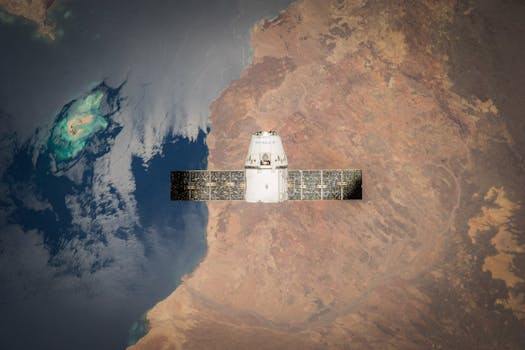Navigating the Skies: Insights into Recent Satellite Telecommunications Innovations
Satellite telecommunications have come a long way since the launch of the first commercial communications satellite, Intelsat 1, in 1965. Today, satellite technology plays a vital role in global communications, providing connectivity to remote and underserved areas, supporting critical infrastructure, and enabling a wide range of applications, from navigation and weather forecasting to television broadcasting and broadband internet access.
Introduction to Satellite Telecommunications

Satellite telecommunications involve the use of satellites orbiting the Earth to transmit and receive signals, enabling communication between different locations. The process involves a network of satellites, ground stations, and user terminals, which work together to provide a wide range of services, including voice, data, and video transmission. Satellite telecommunications have several advantages, including global coverage, reliability, and flexibility, making them an essential component of modern telecommunications infrastructure.
Recent Innovations in Satellite Technology

Recent years have seen significant advancements in satellite technology, driven by advances in materials, electronics, and software. Some of the key innovations include the development of high-throughput satellites (HTS), which offer faster data speeds and greater capacity; the use of advanced propulsion systems, such as electric propulsion, which enable more efficient and longer-lasting satellites; and the introduction of small satellites, also known as cube satellites or smallsats, which are smaller, cheaper, and more agile than traditional satellites.
Another significant innovation is the development of satellite constellations, which involve a large number of satellites working together to provide global coverage and continuous service. These constellations are being used to provide a wide range of services, including broadband internet access, navigation, and earth observation. Companies such as SpaceX, OneWeb, and Amazon’s Kuiper Systems are leading the charge in this area, with plans to launch thousands of satellites in the coming years.
Impact of Satellite Telecommunications Innovations

The recent innovations in satellite technology are having a significant impact on the telecommunications industry and beyond. Satellite telecommunications are enabling greater connectivity and access to information, particularly in remote and underserved areas. They are also supporting critical infrastructure, such as navigation, weather forecasting, and emergency response systems. Furthermore, satellite telecommunications are enabling new applications and services, such as precision agriculture, smart cities, and autonomous vehicles.
The impact of satellite telecommunications innovations is not limited to the telecommunications industry. They are also having a significant impact on other industries, such as finance, healthcare, and education. For example, satellite telecommunications are enabling remote banking and financial services, telemedicine, and online education, which are improving lives and creating new opportunities for people around the world.
Conclusion

In conclusion, recent advancements in satellite telecommunications have revolutionized the way we communicate and access information. The development of high-throughput satellites, advanced propulsion systems, small satellites, and satellite constellations are just a few examples of the many innovations that are transforming the satellite industry. As the demand for satellite telecommunications continues to grow, we can expect to see even more innovative solutions and applications in the future, enabling greater connectivity, access to information, and economic opportunity for people around the world.
See more:
